Odisha chita/jhoti, " Painting the walls and the floors " — part 4
Considered auspicious, the patterns dedicated to the Goddess, as in other parts of India, are often floral, with a preference for lotuses and footprints, to guide Goddess Lakshmi home.
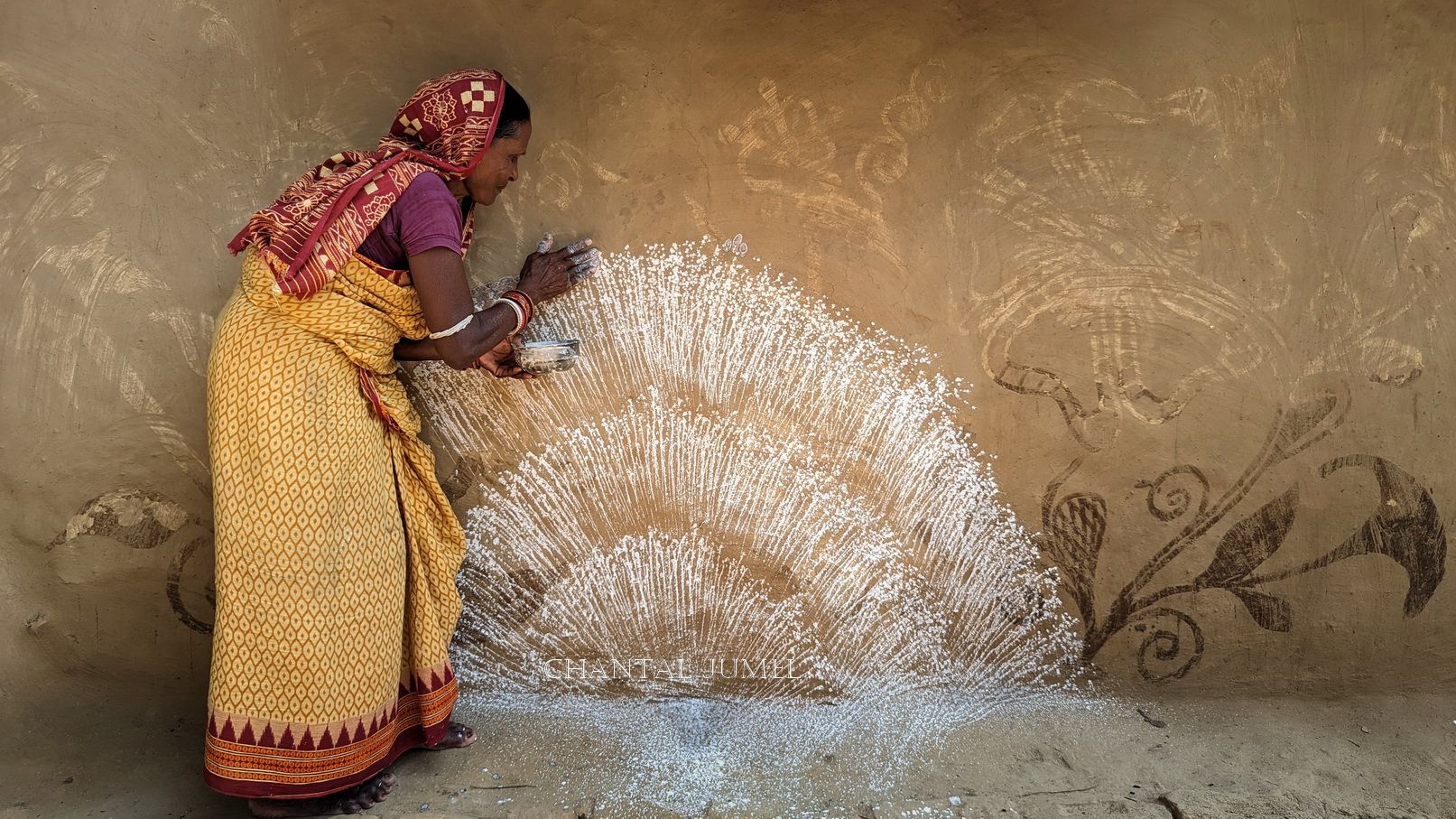
After visiting the city of Bhubaneswar and its temples, we travel to the surrounding villages to meet women who have agreed to share their artistic skills steeped in symbolism. In some regions, wall art accompanies drawings or paintings on the floors. In Odisha, as in Rajasthan, the two coexist in equal measure. I had long dreamt of documenting these popular forms of painting called chita or jhoti in Odisha and the presence of Babu, a guide and connoisseur of local traditions, facilitated my research.
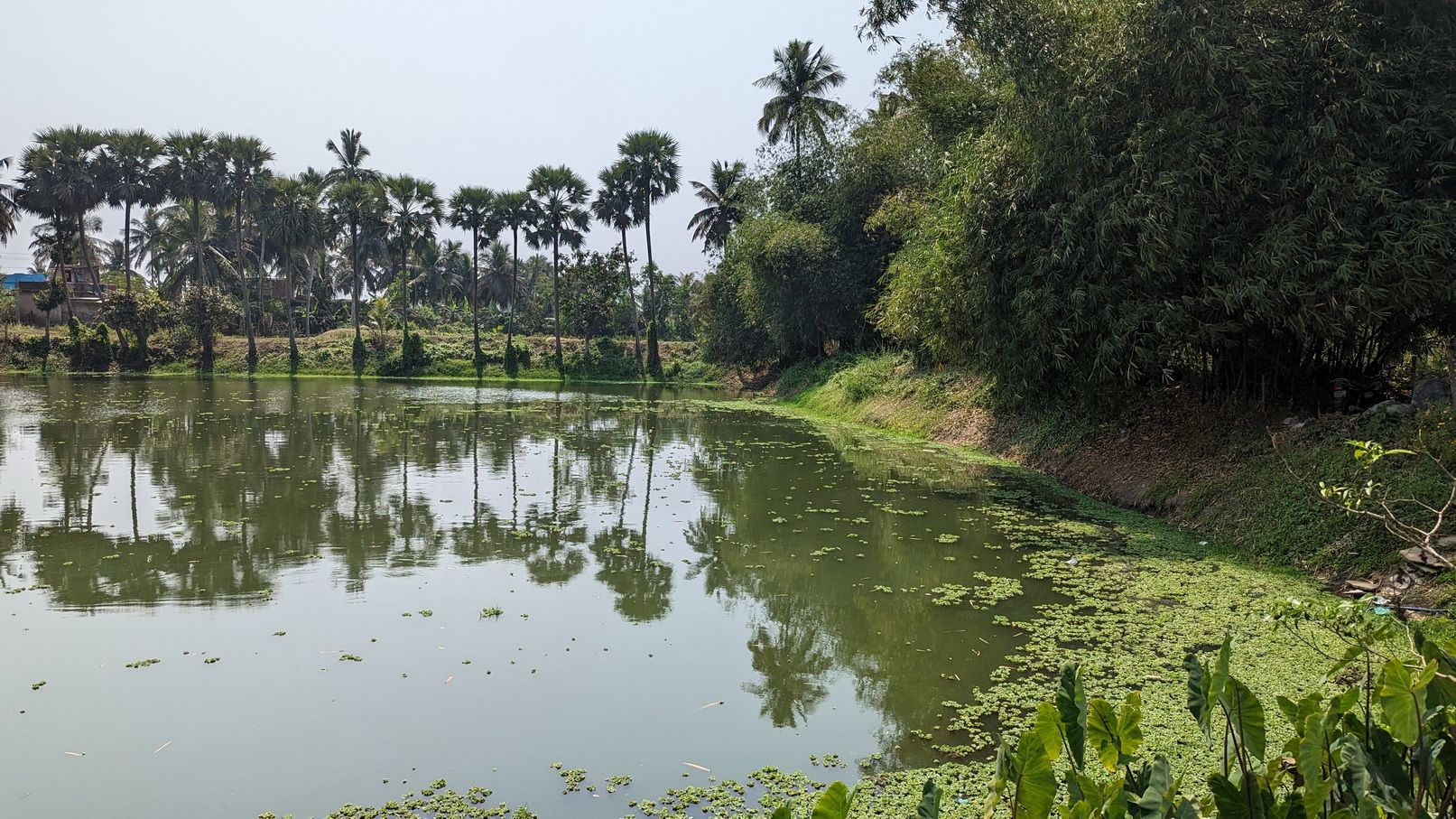
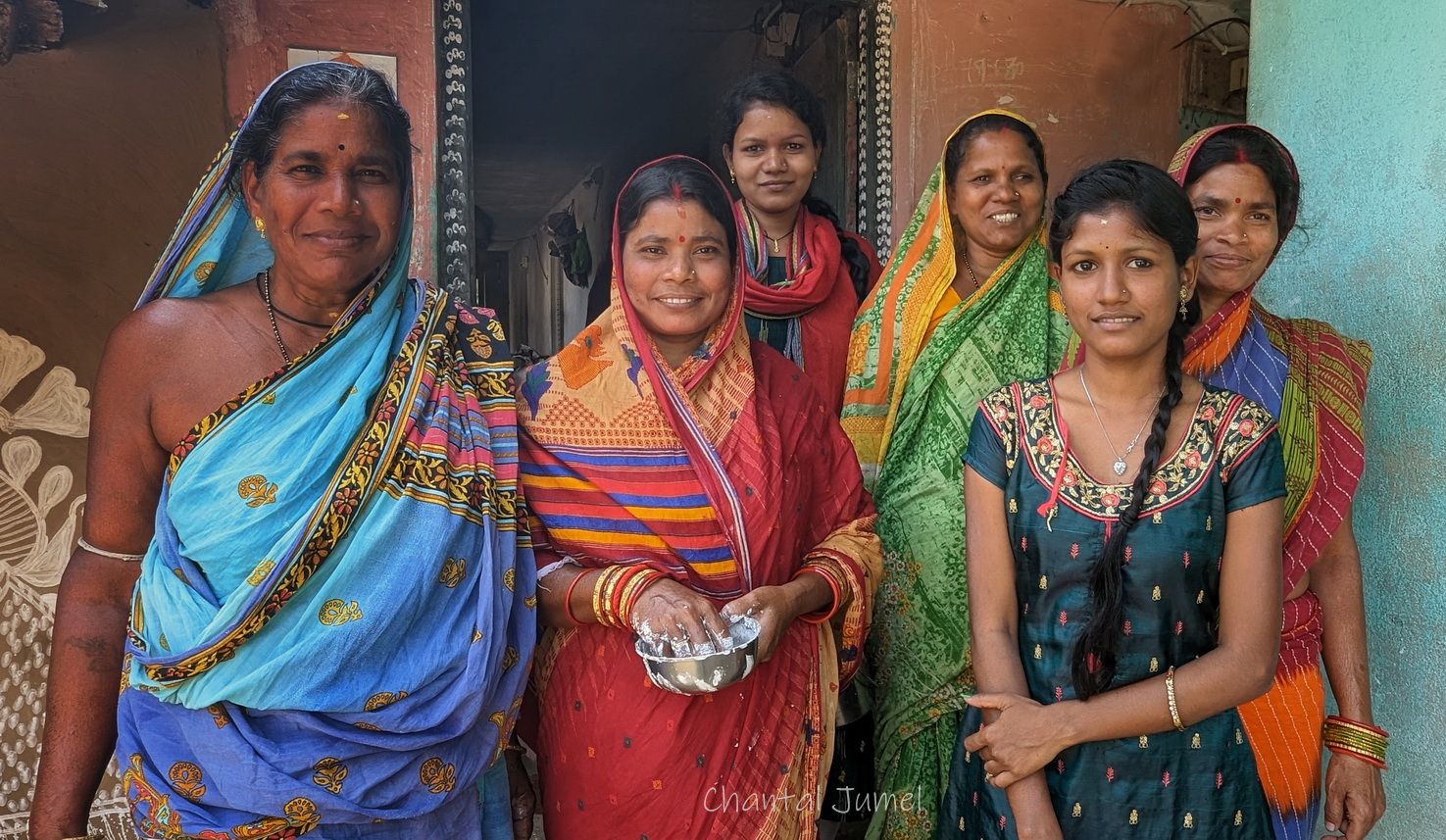
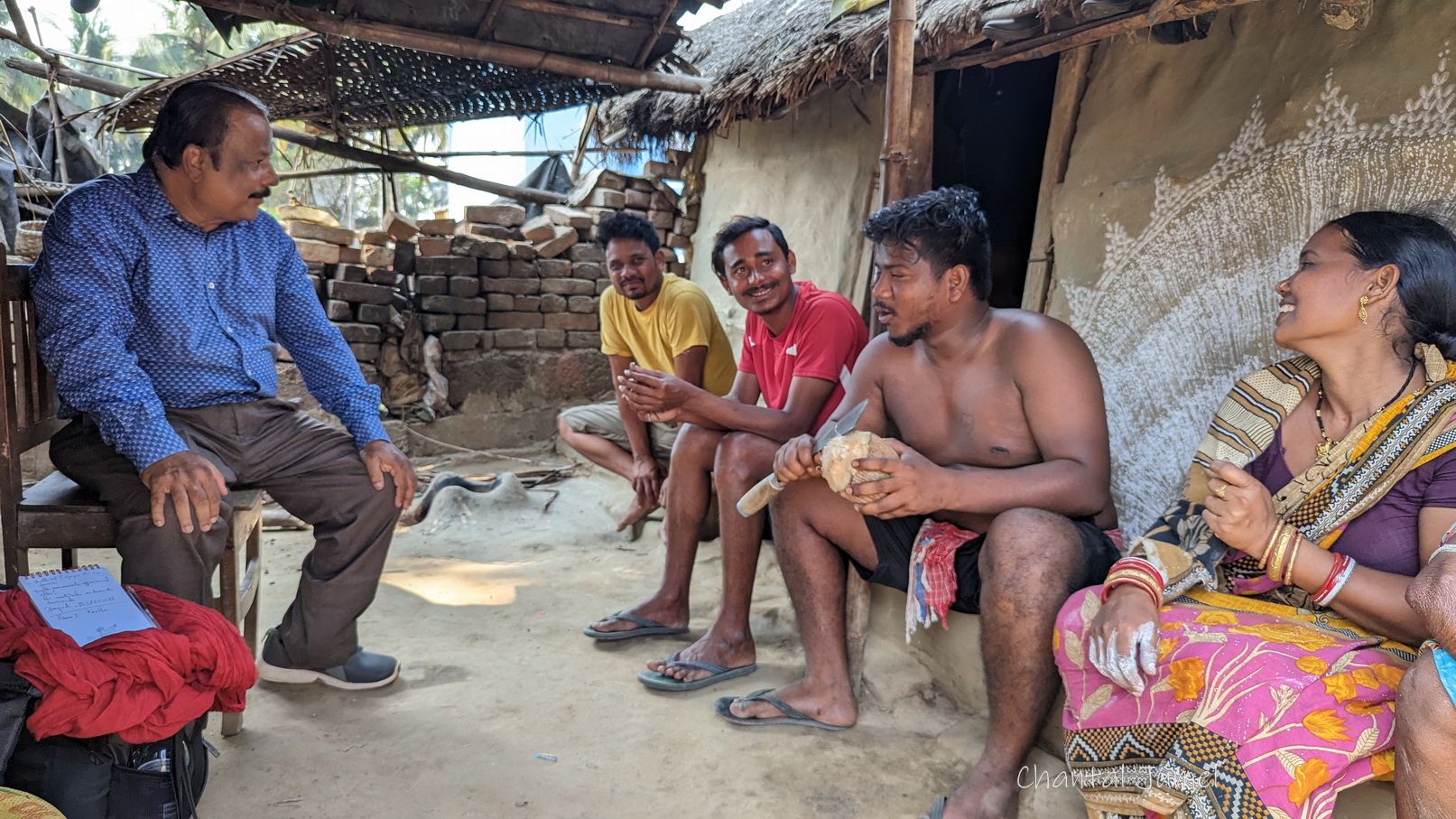
In Odisha, as elsewhere in India, a place of honour is given to Goddess Lakshmi. Although she is the consort of God Vishnu, the goddess of domestic bliss, is worshipped every Thursday in the month of Margashira (mid-November to mid-December) of the Odia calendar. The festival known as Manabasa Gurubar or Margashira Lakshmi Puja heralds the beginning of rice harvest, which is considered the staple food of this region, and despite urbanisation, this agrarian tradition continues among families of Odisha. The festival is also portrayed as a celebration of women's power and caste equality.
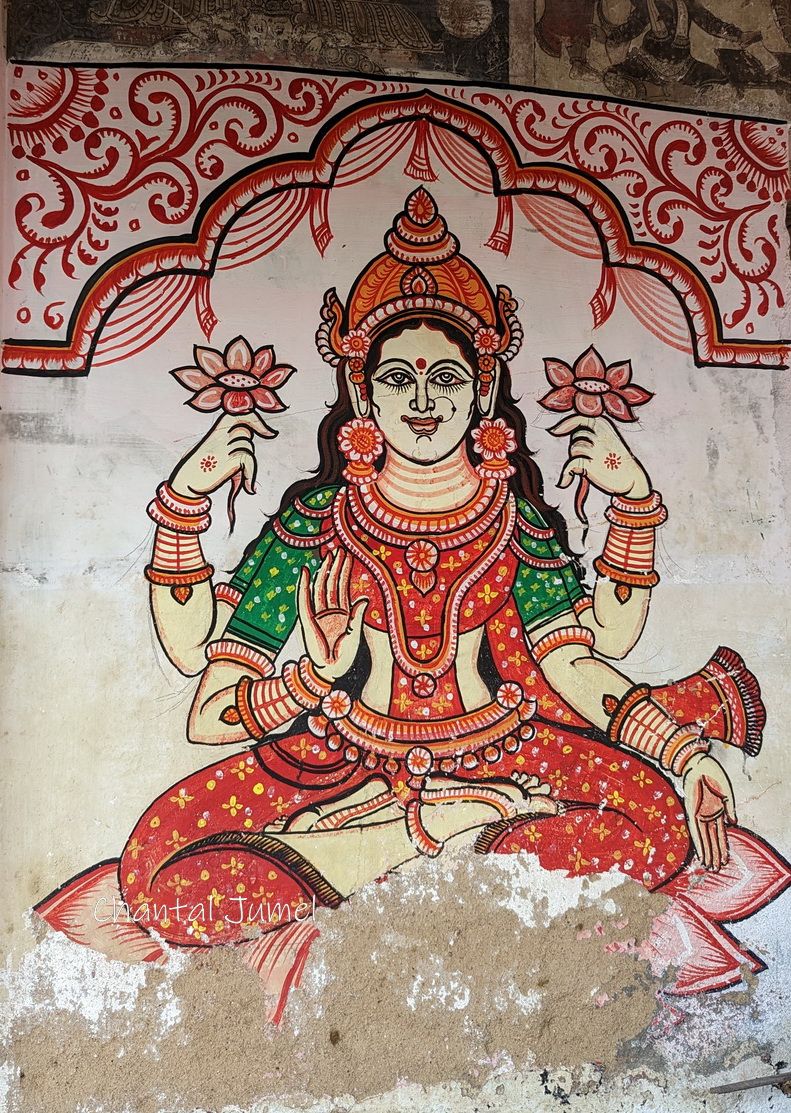
To understand the reasons for this, one has to refer to the Lakshmi Purana, a 15th century Odisha manuscript written by Balarama Dasa, a major poet of Odia literature. Written in the medieval period, the work challenges social hierarchies, condemns untouchability and arrogance of the upper classes, raises issues relating to the religious rights of Dalit (a Sanskrit word meaning -oppressed-) women in Odisha and emphasises the importance of female power in the face of male hegemony.
The story that accompanies the Manabasa Gurubar ritual tells of Goddess Lakshmi's visit to an untouchable young woman named Shriya who had been fasting and worshipping the Goddess every Thursday in the month of Margashira. Seeing such devotion, Lakshmi blessed her. In ancient times, people of lower social status were not allowed to pray and perform rituals in honour of the Gods. When Lakshmi returned to the temple, Jagannath and Balabhadra, her husband and brother-in-law respectively, forbade her to enter the shrine, deeming her impure because of her association with an untouchable. Driven out of her home, Lakshmi took revenge by cursing her husband and brother to wander homeless and suffer hunger and thirst for 12 years. In the following days, the divine siblings worried about food scarcity. All the vegetables, fruits, pulses, and spices were missing and there was not even a drop of water to drink. Lakshmi, furious and hurt, summoned Vishwakarma, the divine architect, and ordered him to build a new palace. Years passed and the two brothers, hungry and continually harassed, were begging in the streets of the city until they reached the new palace. Famished, they accepted the meal served by one of the untouchable maids. Jagannath immediately sensed that the food had the flavour of Lakshmi's cooking and, together with his brother, they begged the Goddess for forgiveness, who accepted on the sole condition that there would never again be caste or creed discrimination on earth.
I would like this principle to apply to me, a non-Hindu who is not allowed to enter the Jagannath temple. Perhaps one day, when I stand before the gates of the shrine, I will remind the guardians and priests of the story of Shriya and Goddess Lakshmi written by the greatest poet of Odisha who condemned discrimination.
The Lakshmi Purana recited by women is associated with fasting rituals during the holy month dedicated to the worship of the Goddess. It is believed that Goddess Lakshmi visits houses decorated with designs called jhoti, chita, murujan, or osan in Odisha. Jhoti or chita is the art of painting the walls and the floors with liquified rice paste (pithau) like its south Indian counterpart called maavu kolam.
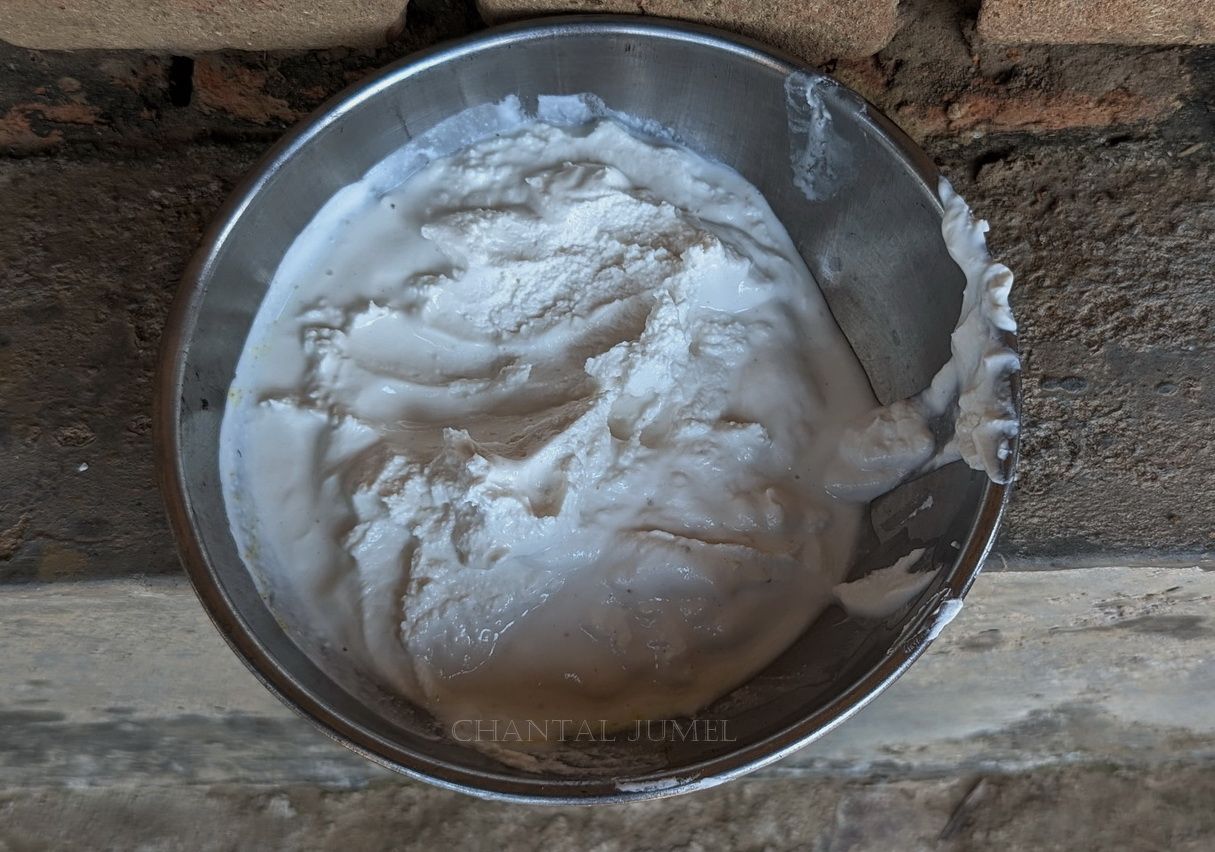
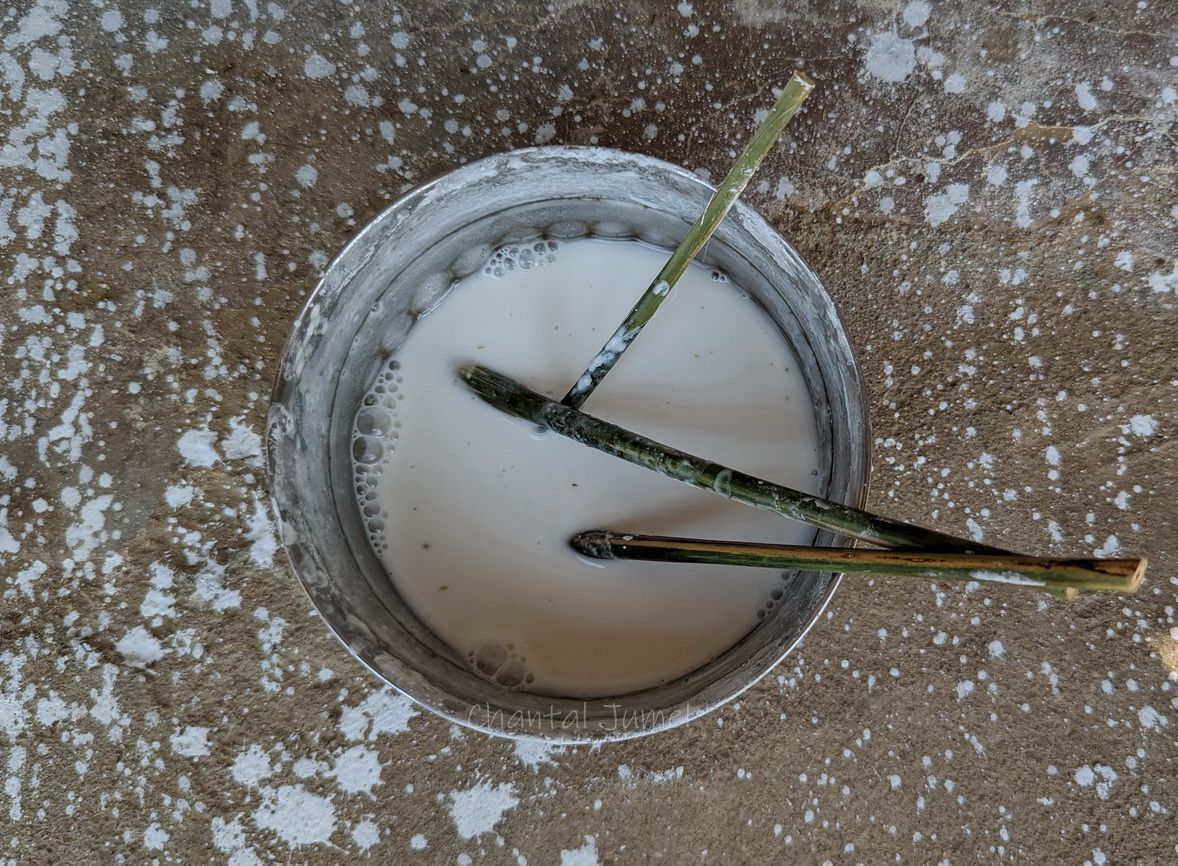
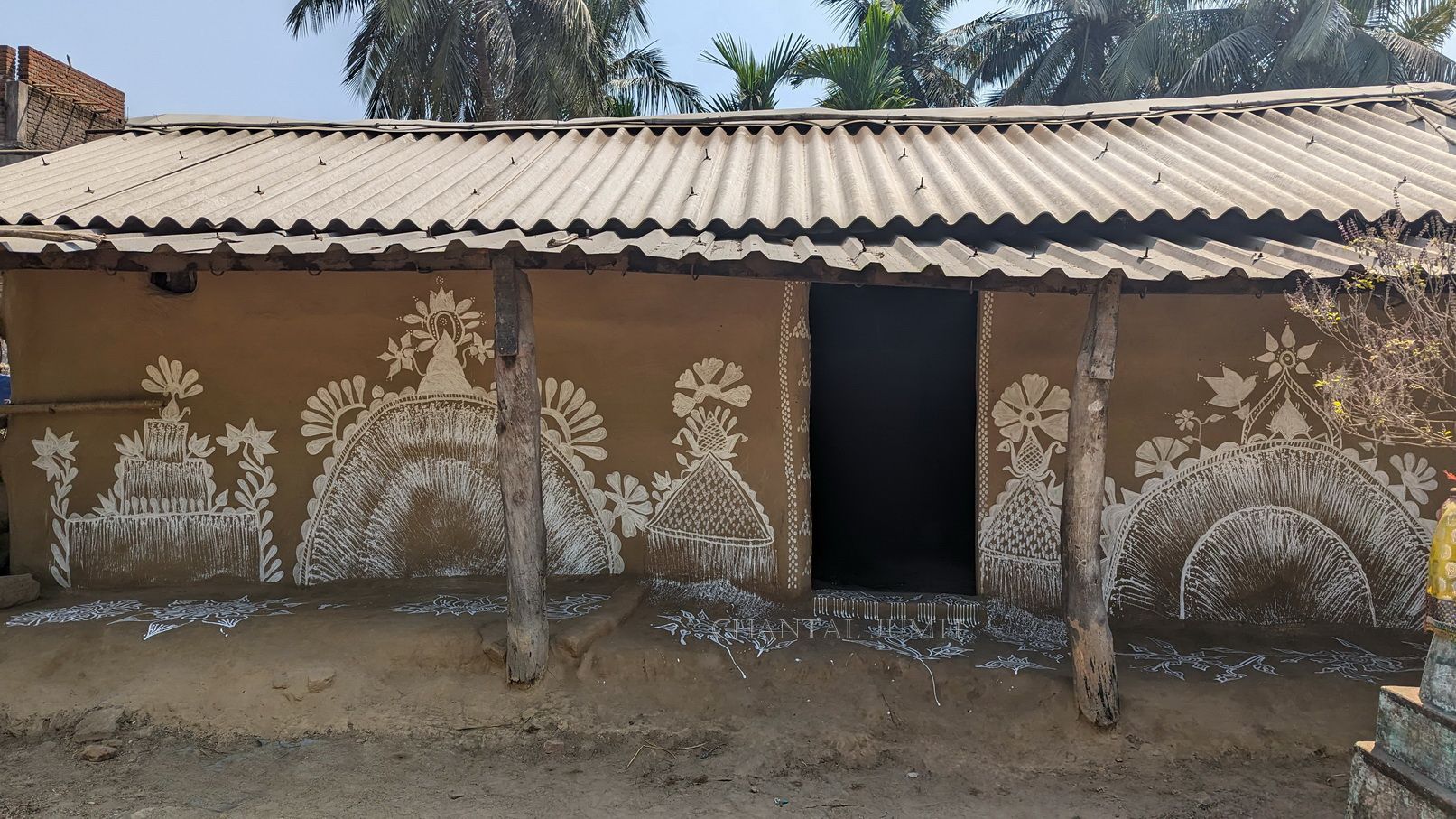
Considered auspicious, the patterns dedicated to the Goddess, as in other parts of India, are often floral, with a preference for lotuses and footprints, to guide Goddess Lakshmi home.
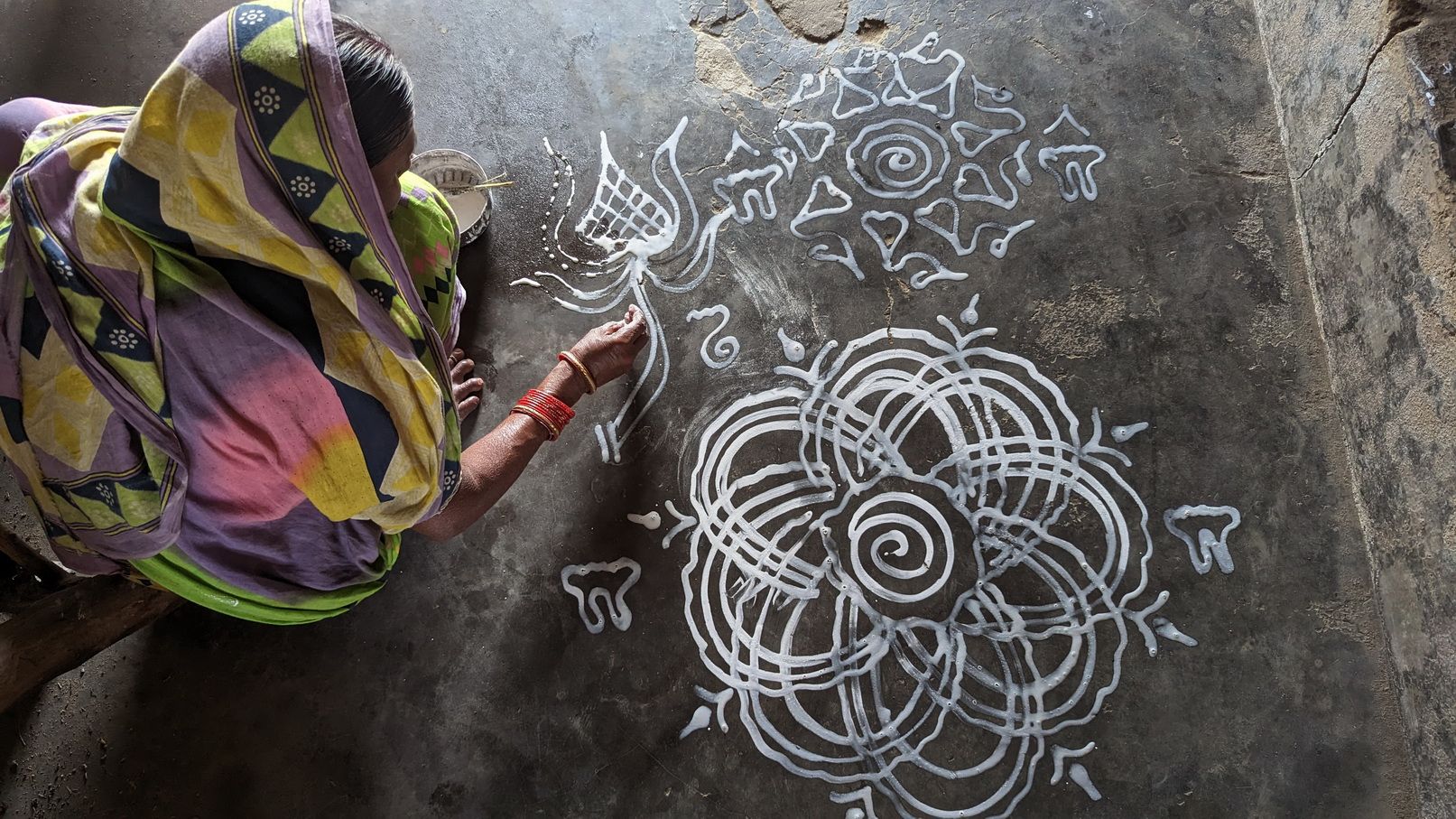

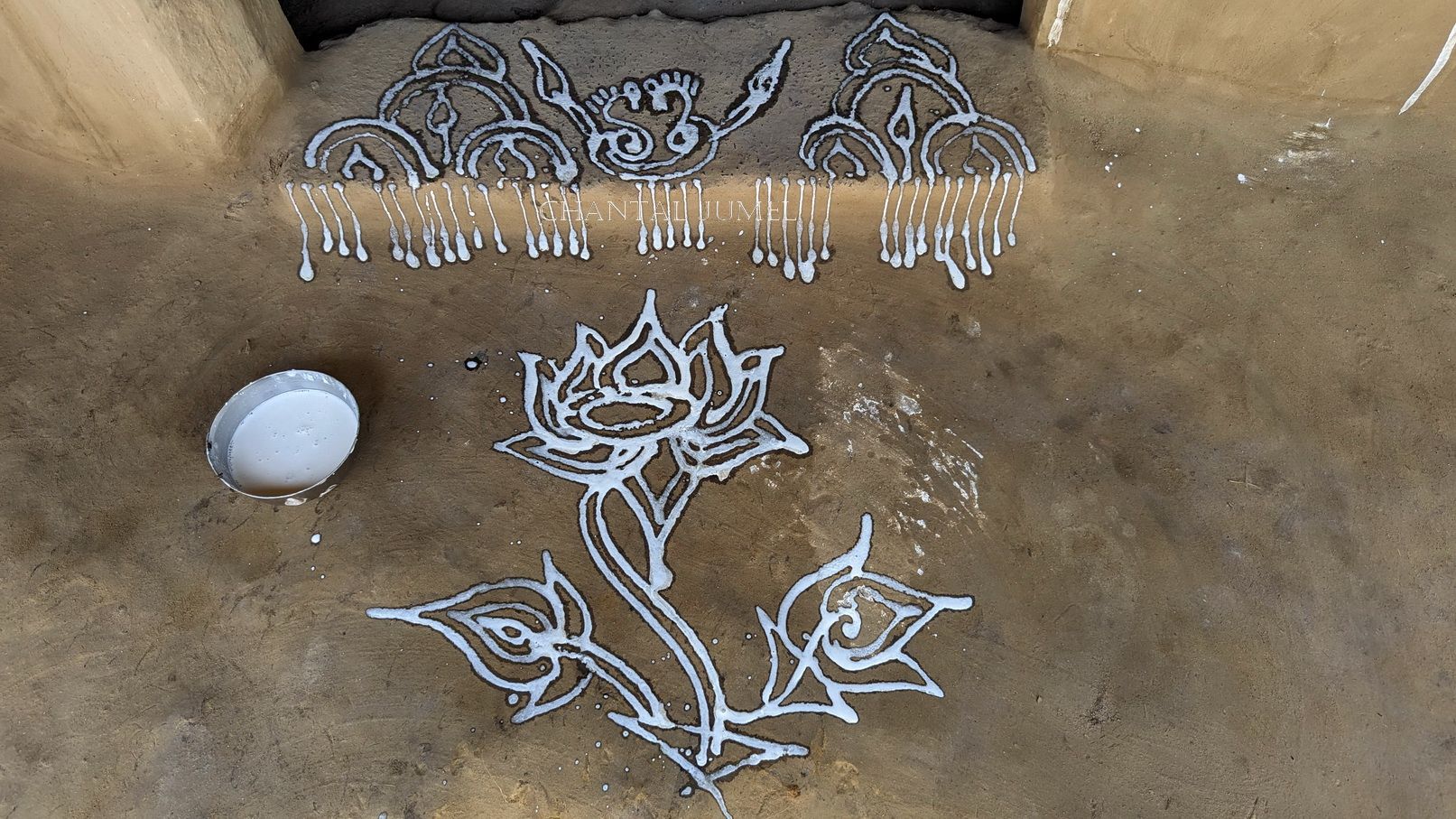
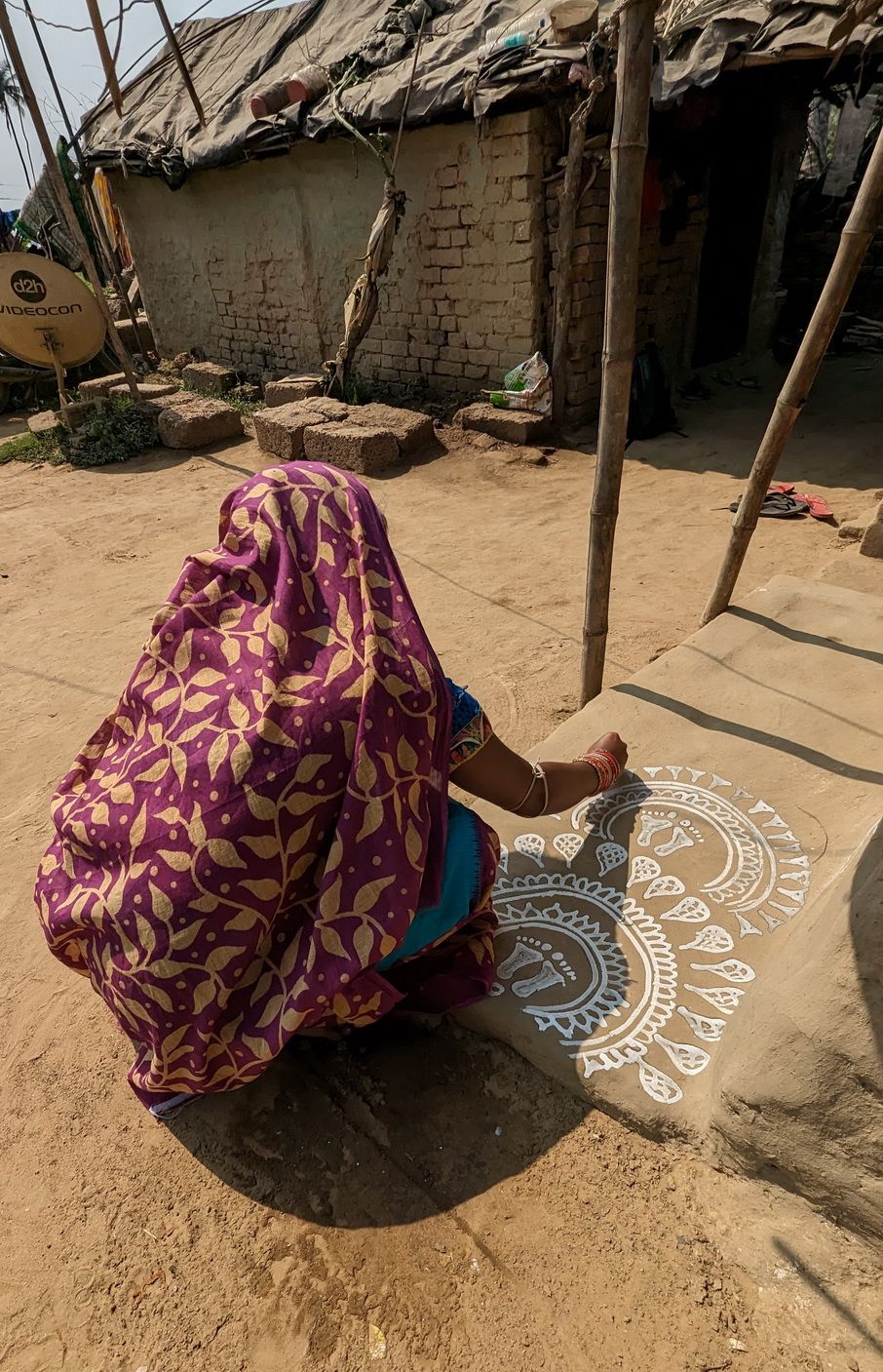
The mud walls and floors of houses or huts display a wide variety of patterns. While some of these designs are characterised by the repetition of symbols, others are notable for their rhythm and abstraction. As I move closer to the houses, and even before my eyes could distinguish the paintings, I am struck by the rhythmic jingle jangle of the bangles around the women’s wrists and by the baffling simplicity of the graphic gestures. As the fingers sprinkle the liquified rice paste on the wall, the spraying flows in a fan-like pattern until it materialises into sheaves of paddy: an allegory for celebrating the abundance of the harvest.
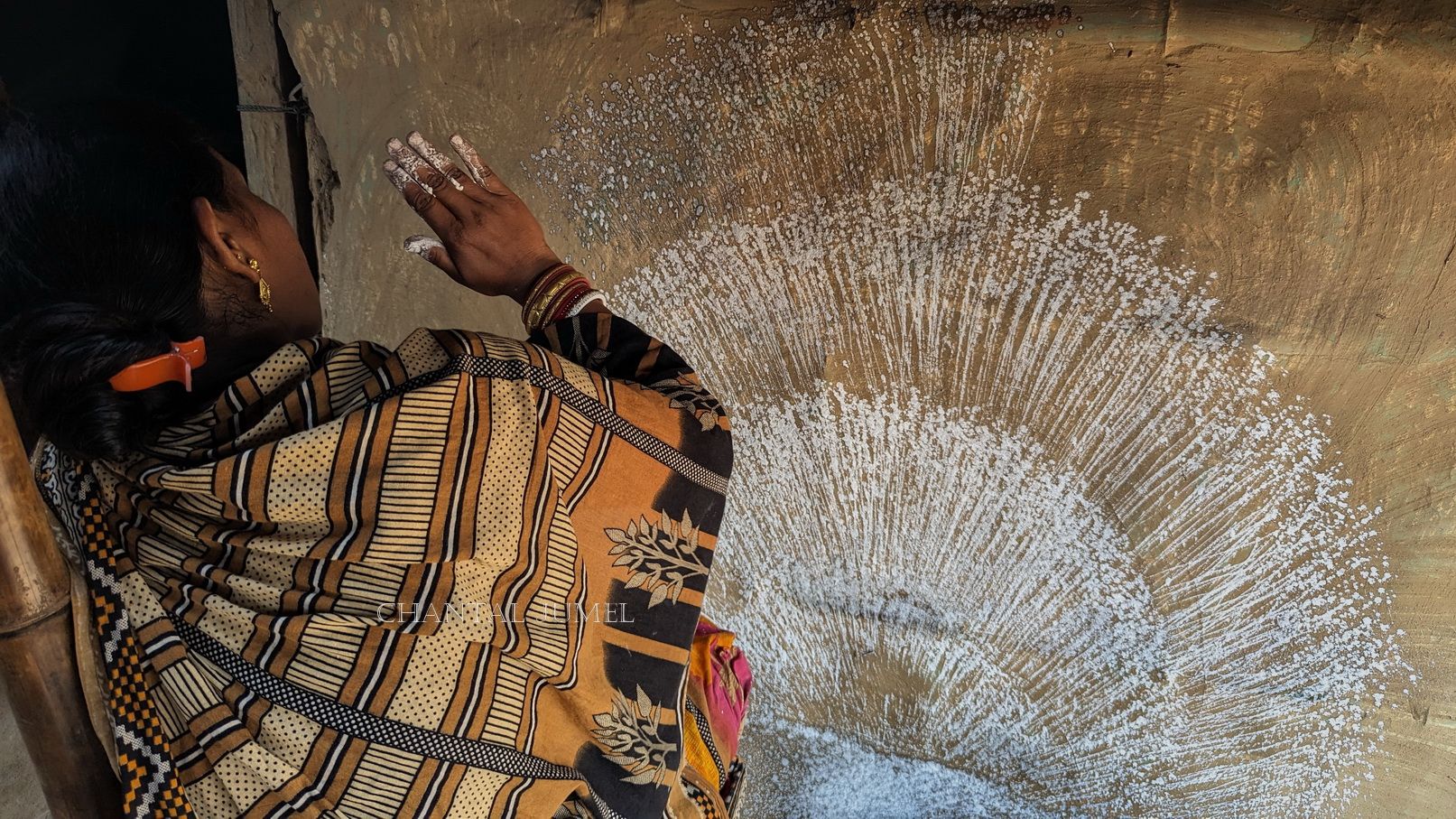
The minimalism of the work, the economy of gestures memorised from generation to generation, result in an ingenious technique that perfectly illustrates a bouquet of stalks, and the upright or hanging rice panicles.
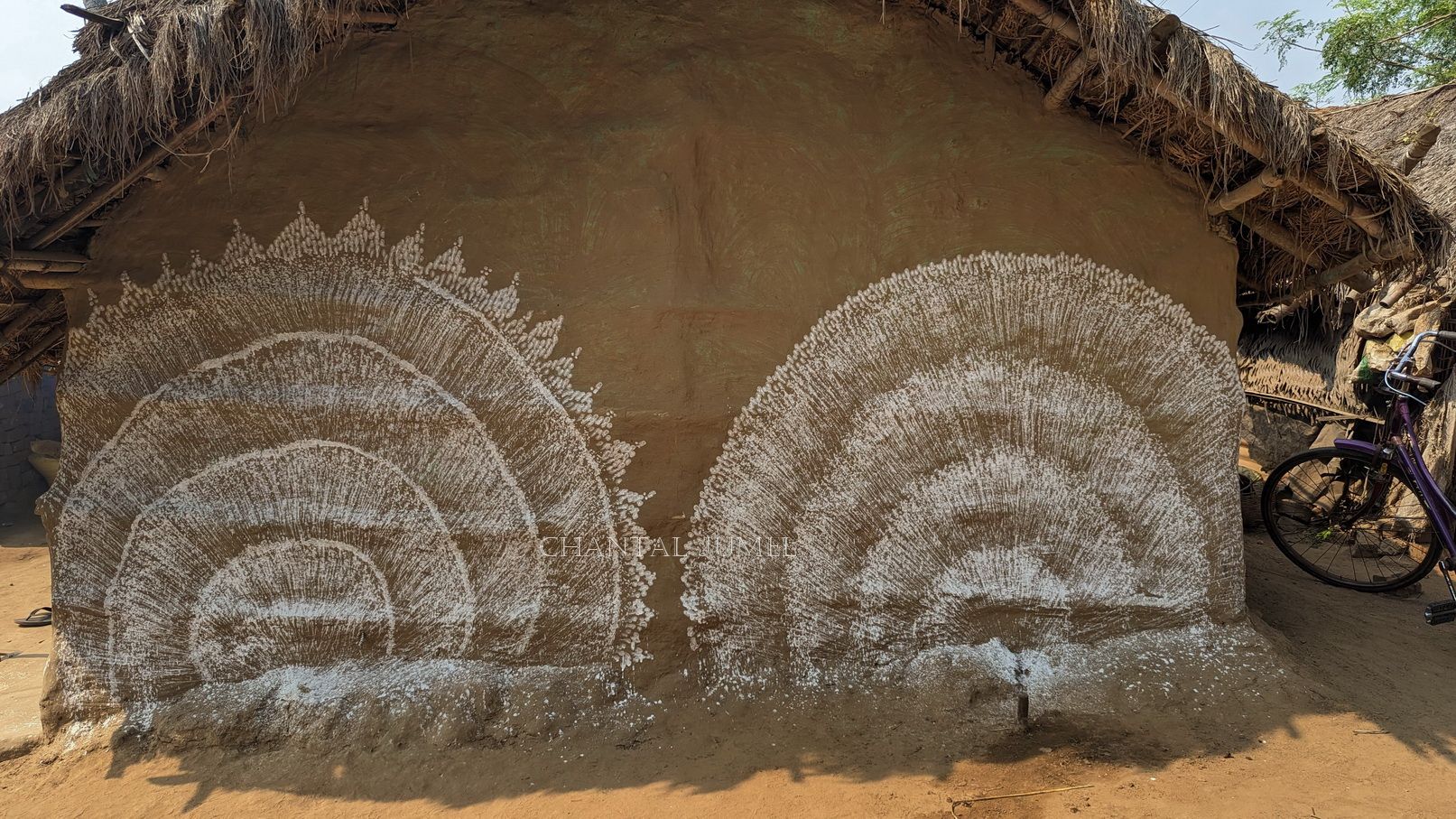
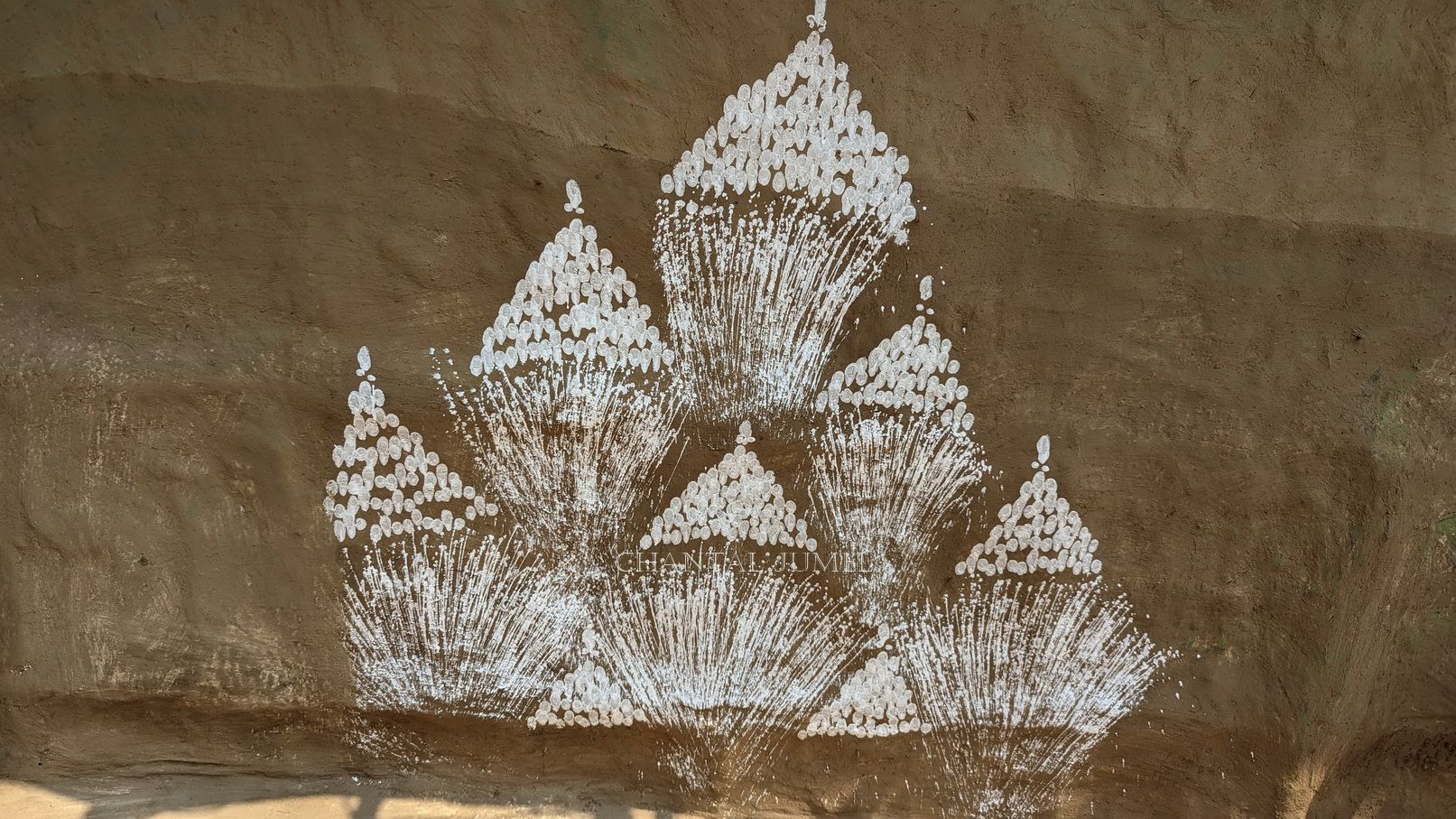
Elsewhere, on another wall, women make more or less circular marks with three fingers, and the repeated motifs are like grains of rice, cleverly arranged to form a triangular stack. The multitude of grains reinforces the notion of a bountiful earth.
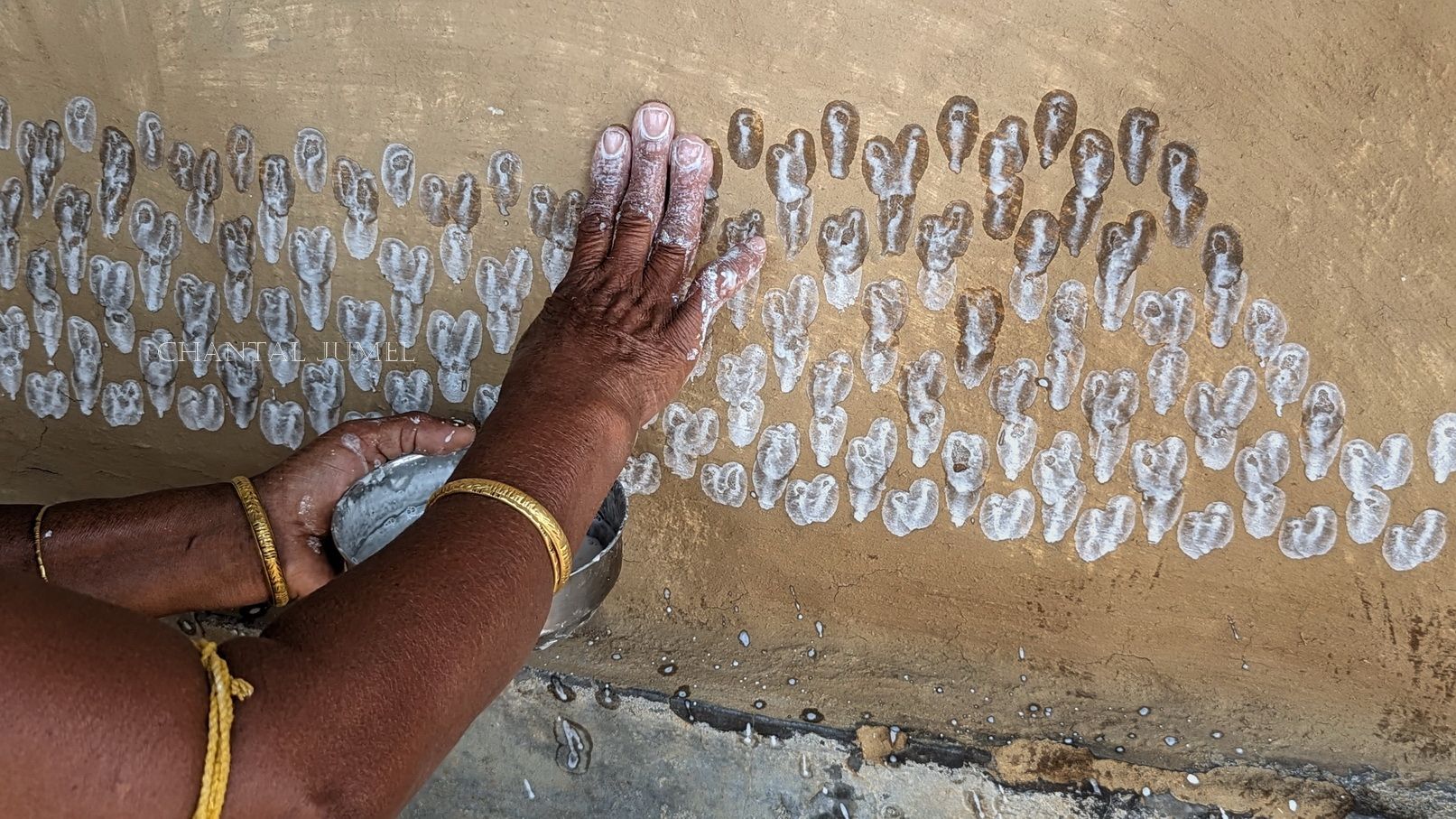
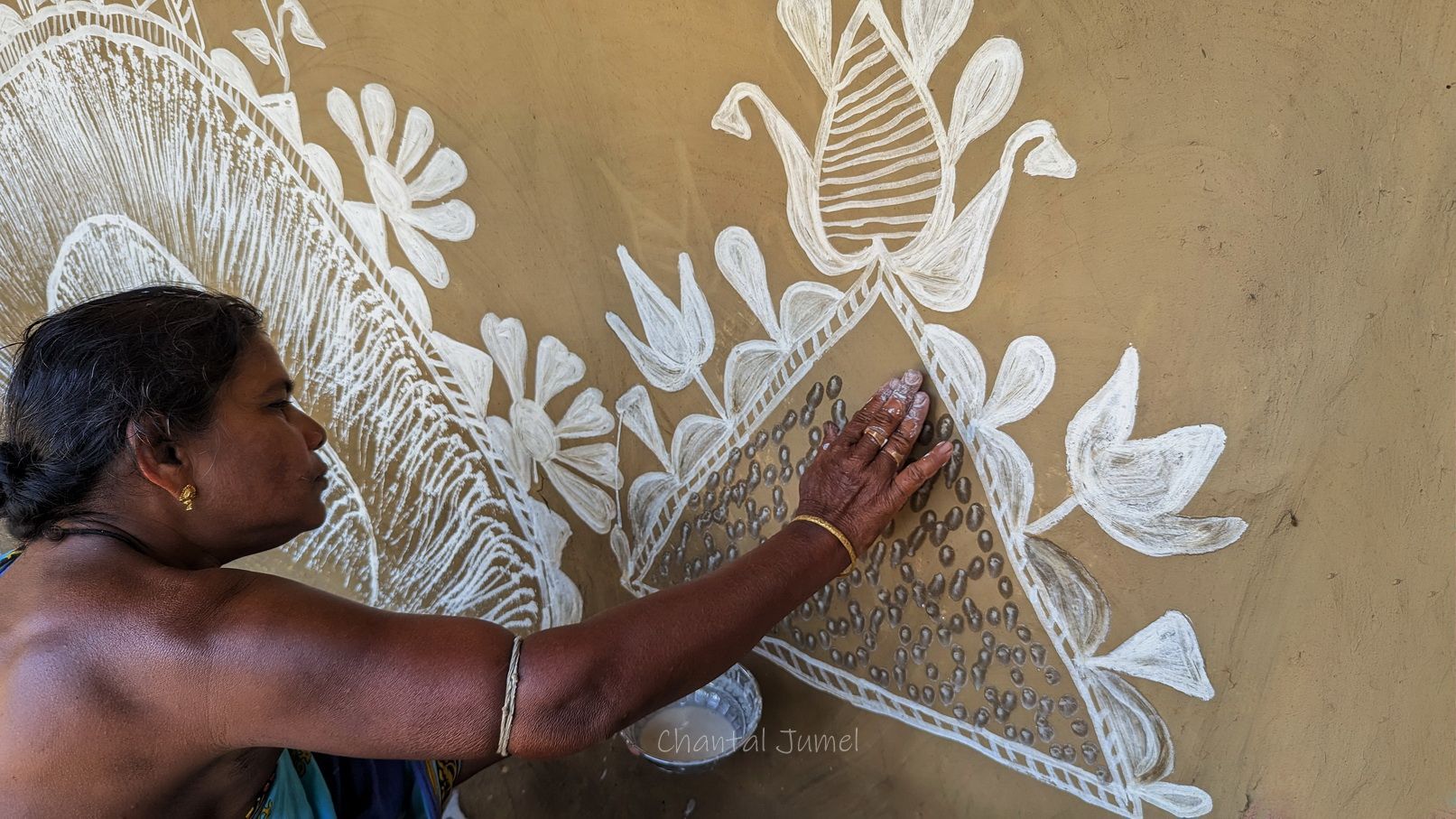
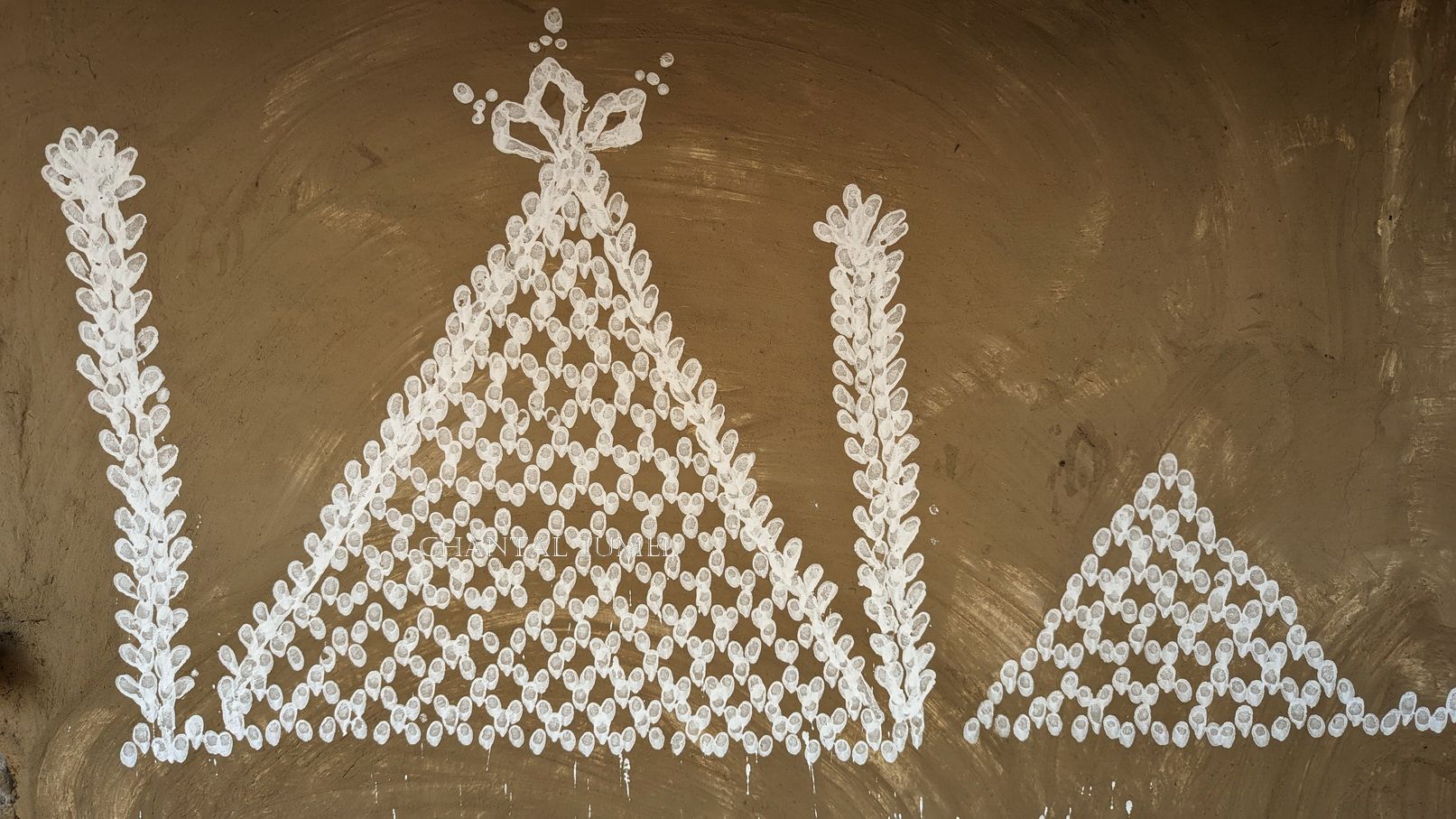
As in other Indian graphic traditions, flowers, animals, and birds adorn the walls and floors. Their symbolic presence reflects concepts related to the fecundity of the earth, which in early agrarian societies was associated with an abundance of grains, vegetables, fruits, and water. By extension, they encompass broader ideas of opulence, well-being, and hospitality.

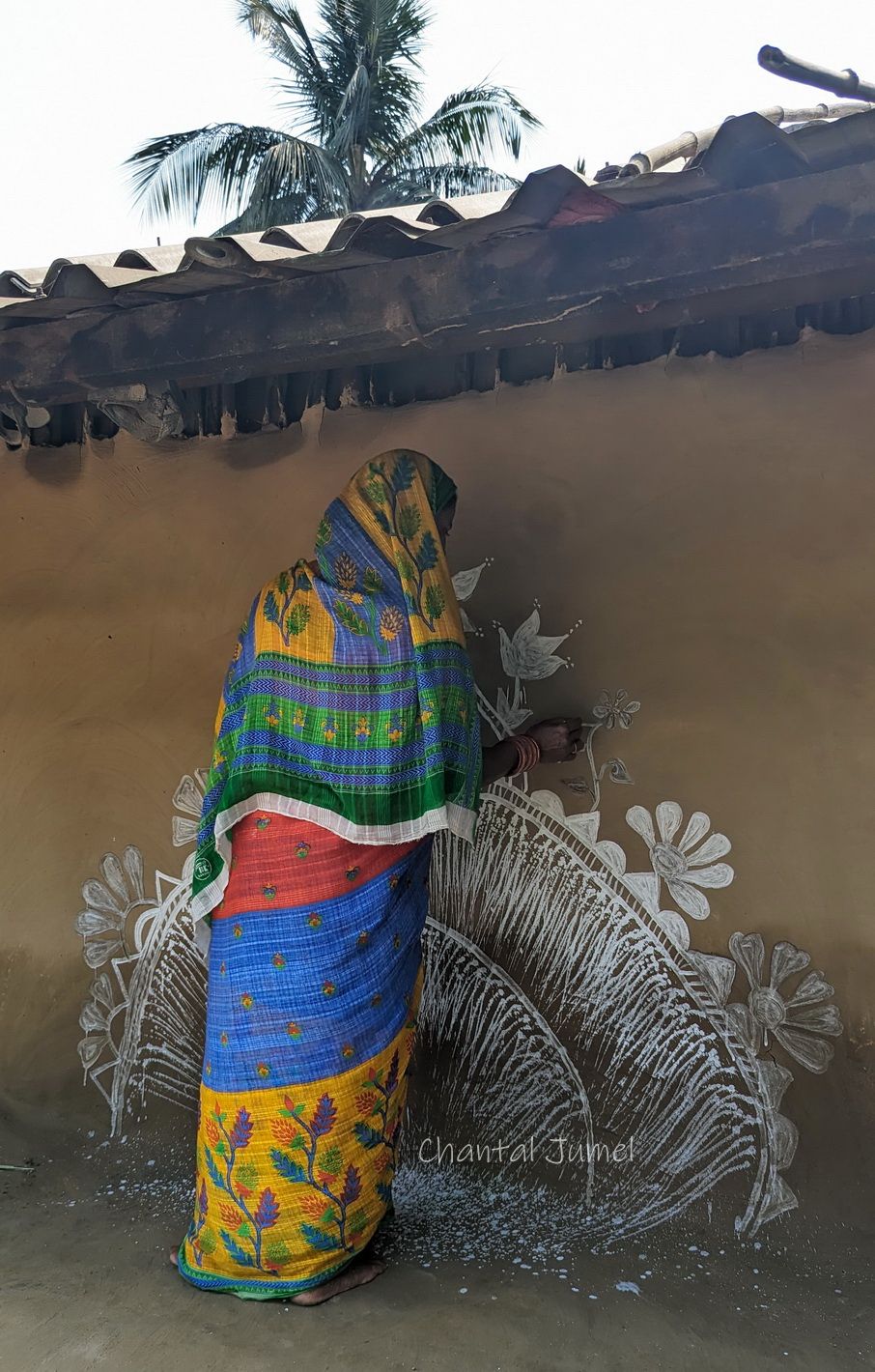
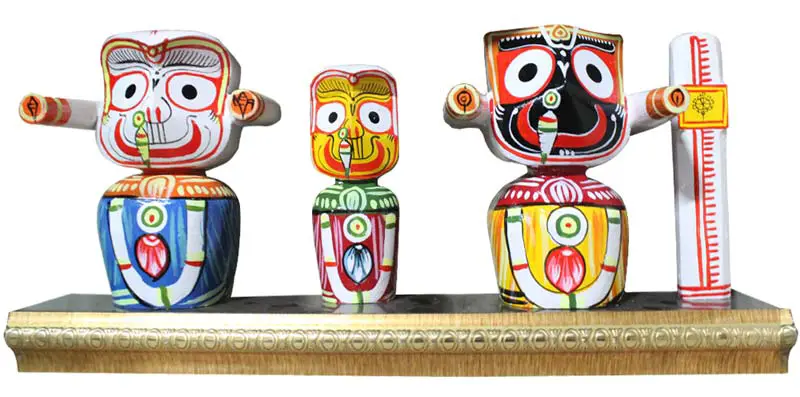
The image of Jagannath, alone or accompanied by Balabhadra and Subhadra is ubiquitous in the folk paintings of Odisha. He is a distinctive deity, invoked in many ways by the followers of various Hindu sects. He is also considered a tribal god who has been incorporated into the fold of Hinduism. The Jagannath Temple in Puri, which has become one of the major pilgrimage sites in India, has always been a religious, and artistic centre that has inspired and enriched Odissi dance, music, sculpture, patachitra, and chita wall paintings.
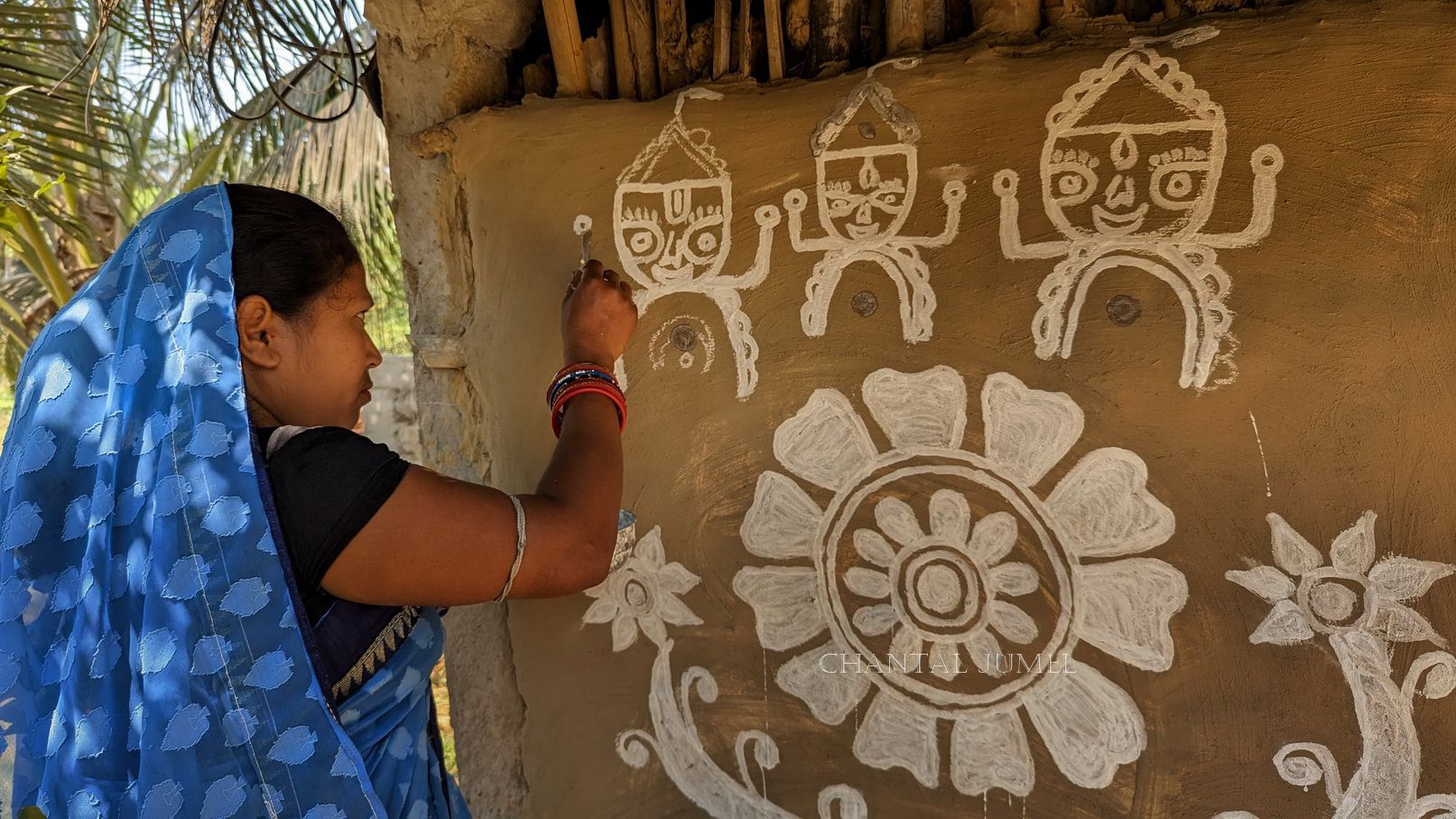
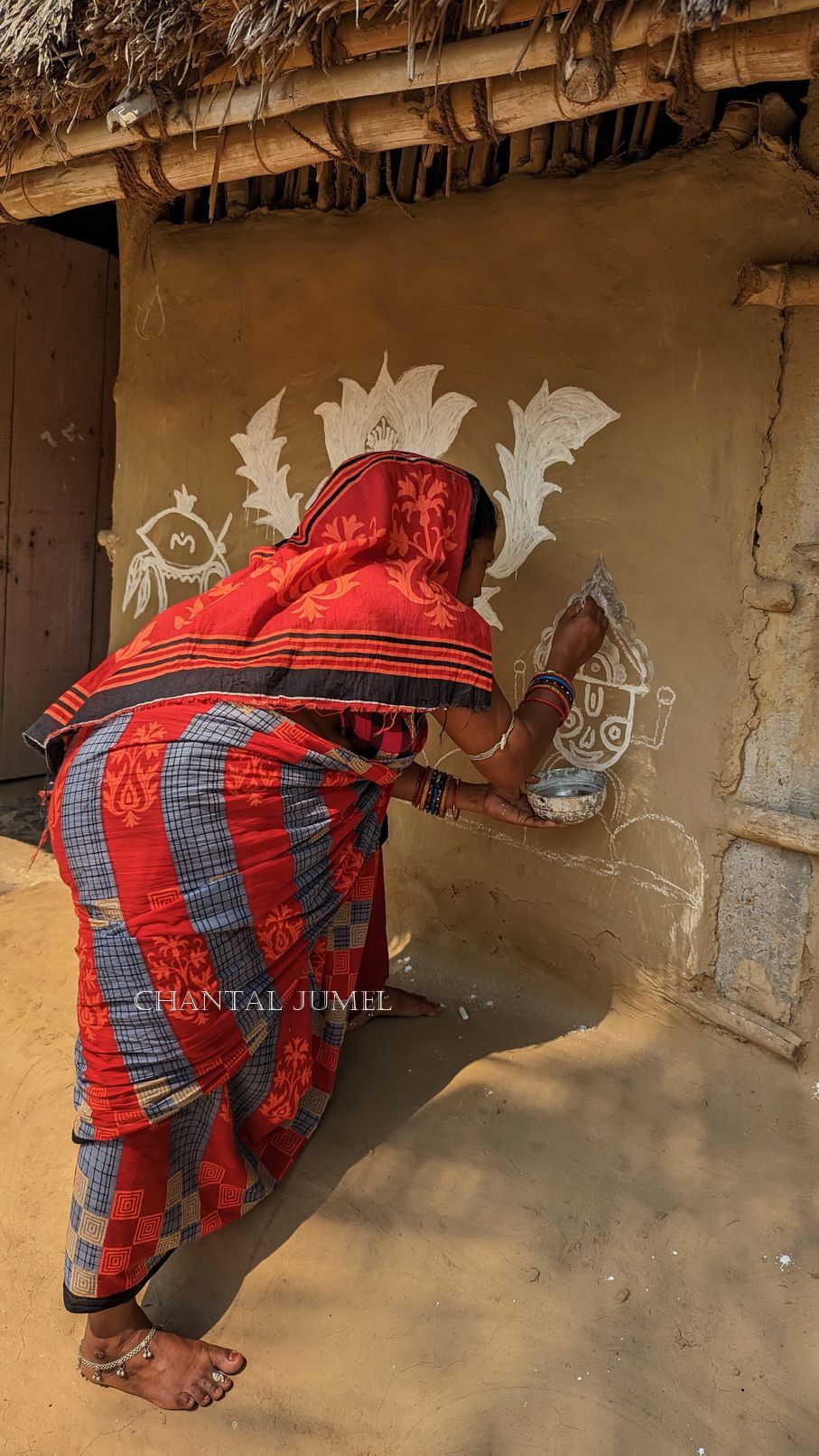
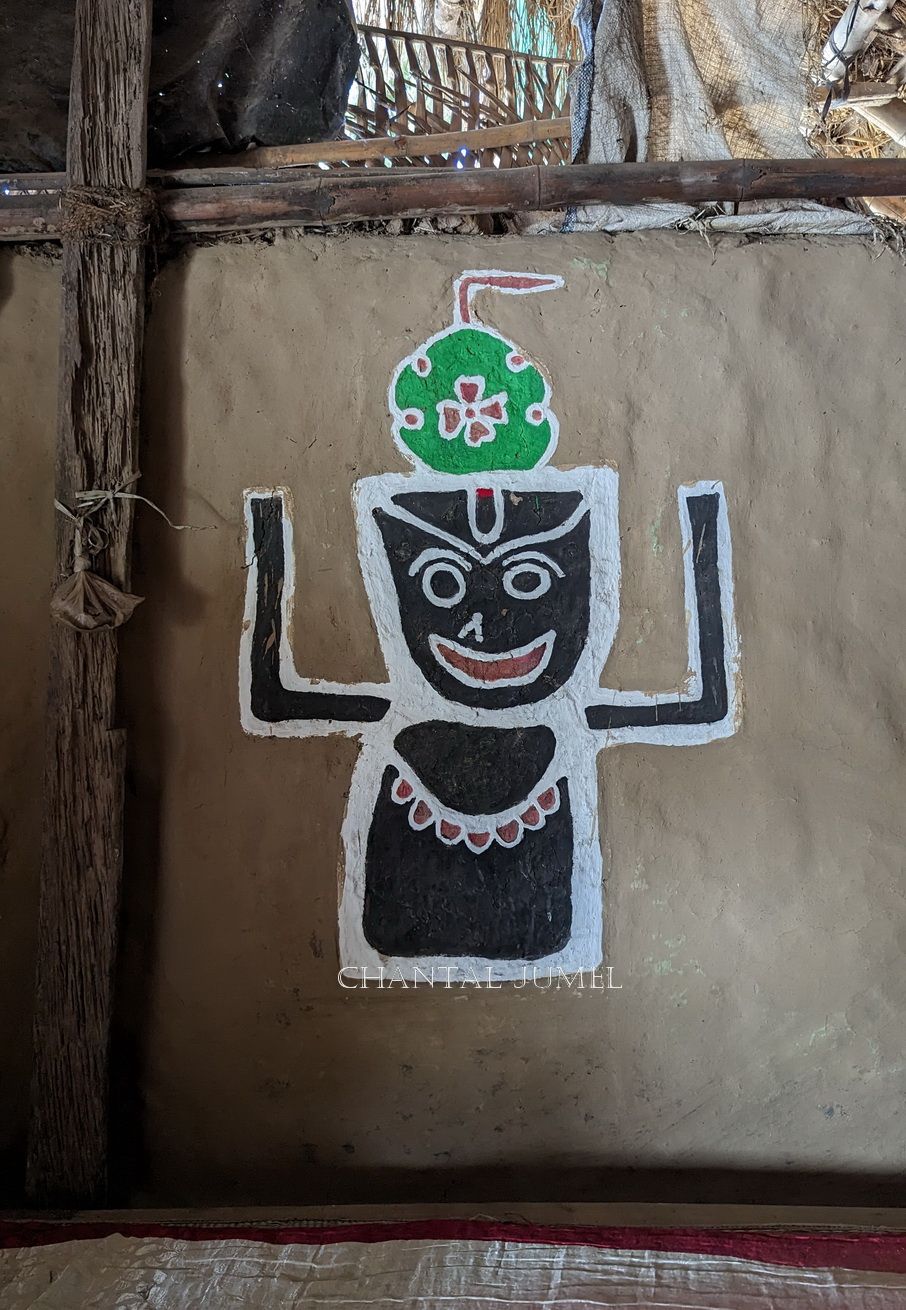
No article on rural Indian culture would be complete without mentioning the extraordinary photographic documentation of Jyoti Bhatt, an Indian artist best known for his modernist work in painting and printmaking, as well as for his photographs of the arts and crafts of Indian villages.
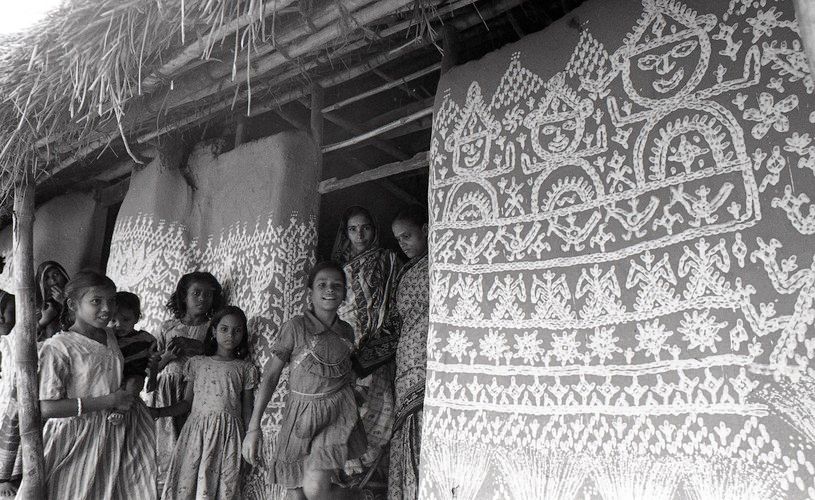
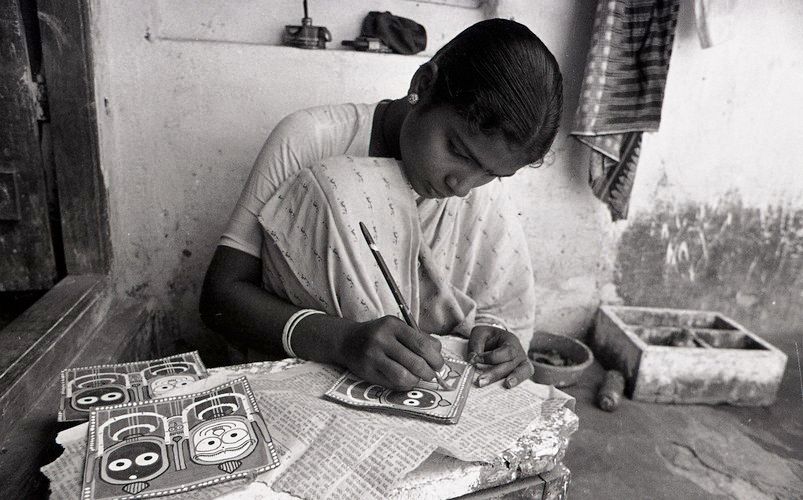
I would also like to mention Stephen Huyler's soulful photos and descriptions in the book : Painted Prayers : women's art in village India. It remains a personal source of inspiration to this day.
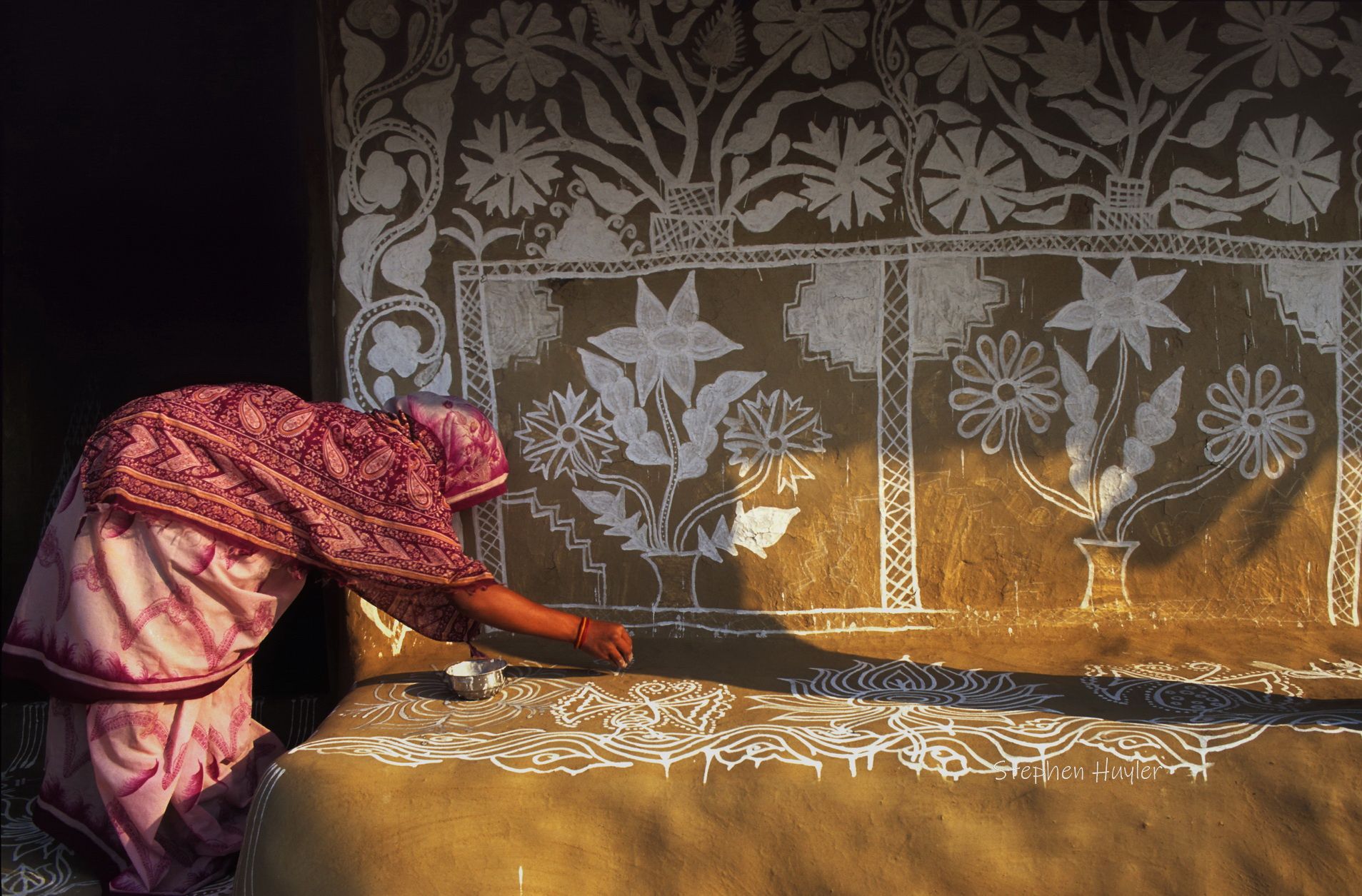
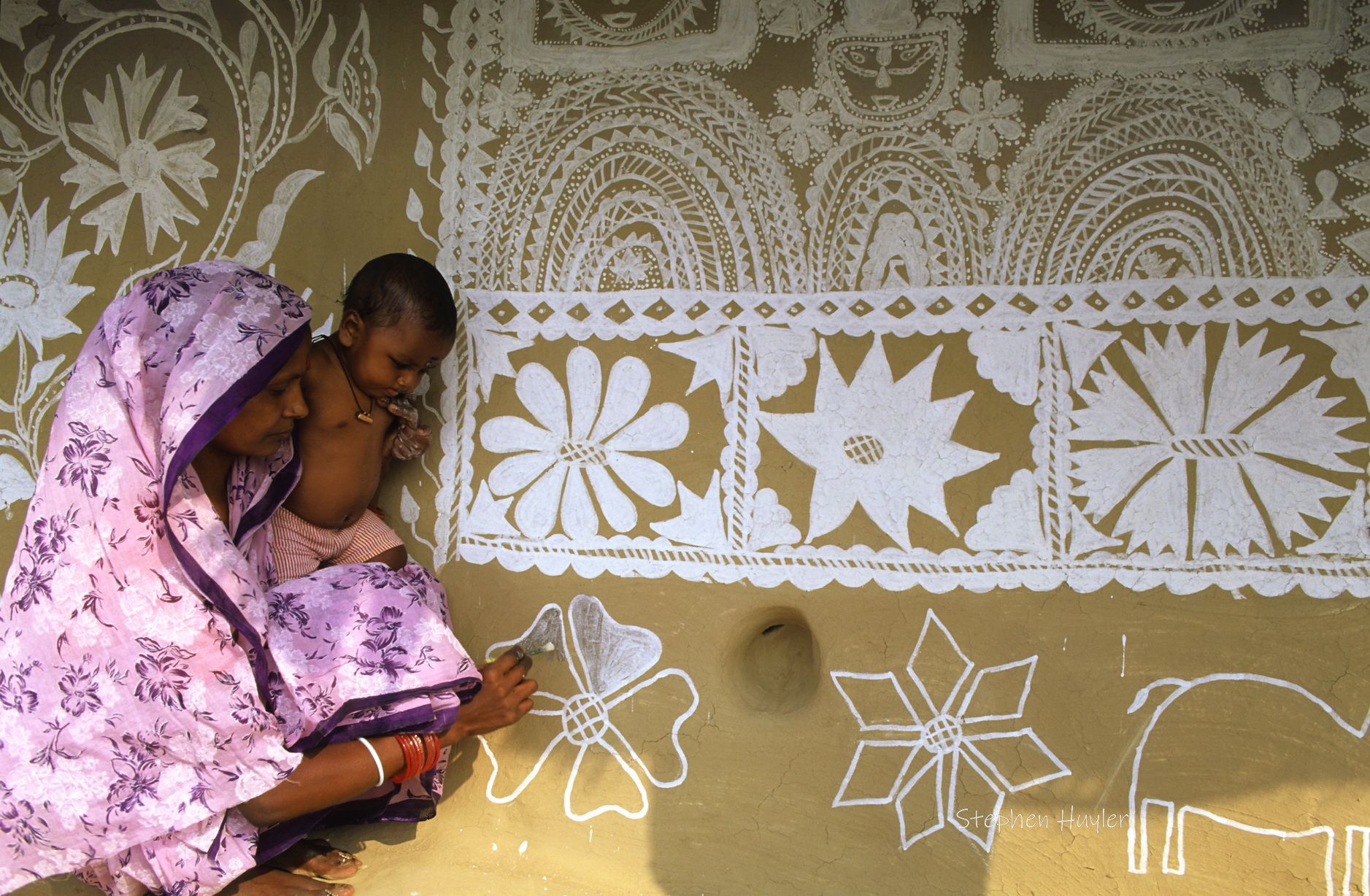
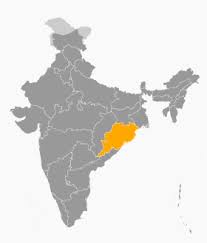
Story to be continued on a future trip...
Previous articles:
Odisha chita/jhoti, "Arts and Crafts in Bhubaneswar, " — part 1
Odisha chita/jhoti, "Visiting Bhubaneswar and Raghurajpur" — part 2
